I’ve started working with the Ruger LC9s (here’s Ed Head’s review on DRTV), the little striker-fired 9mm and I am impressed (and, yes, Ruger is a long-time show sponsor). If you recall, several years back I did an evaluation of all the mini-9s on the markets…since then I’ve tried to keep up with what’s been added to the market.
I did come to several painfully obvious conclusions:
- All mini-9s bark, some harder than others.
- The delimiting factor in shooting the little 9mms is how you handle that bark.
For me, the best-shooting of the little guns was hands-down the Sig P938, which I sort of expected since the 938 is a shrunken single action 1911. I have more rounds through 1911s than any other gun, short or long. I also liked the handling of the striker-fired single action Kimber Solo for the same reasons, but the Solo, with the ammunition it preferred…n0, demanded…was the biggest handful of the bunch.
However, when it came to holes in the target, the winners were the long DA triggers of the original LC9 and the Old Skol Kahr PM-9 (and, later, the Glock-ish trigger on the striker-fired Beretta Nano, which was crazy accurate). The Taurus Slim — I believe the first of the new generation of mini-9s, allowing for the Kahrs, which has been around for a long time — fell pretty much in the middle, and the S&W Shield had yet to come out…since then, I’ve shot a couple of Shields, and I’d put it with the Nano on trigger pull. If I was going to carry a Shield, I would go to Apex Tactical for a trigger job quick like bunny.
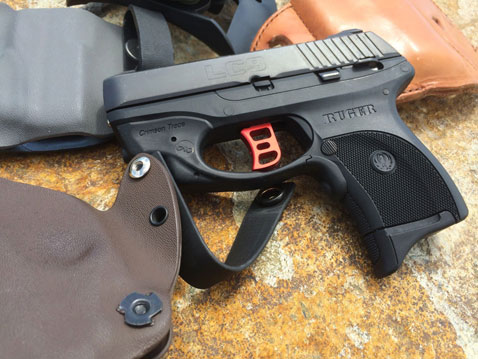
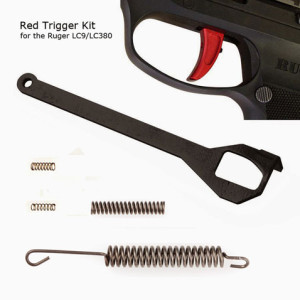
I was intrigued enough by the original LC9’s skinny profile and excellent ergonomics to make a run at “perfecting” the little 9mm. Someone had mentioned that Eric Galloway of Galloway Precision was becoming the gunsmith of choice for the new breed of polymer-framed mini-pistols, so I sent him the LC9 for his first generation “red” trigger. The gun came back looking profoundly weird, but with a great trigger pull (a really super smooth 6 pounds on my Lyman gauge) and sans magazine “safety.” The new generation “Red” short-stroke triggers aren’t nearly as strange looking, BTW, and for $99 a screaming good deal).
I’ve never been as hysterical about the magazine safety as some other gunny fools. I’d prefer not to have it, but it’s just not that big a deal for me. I would also like to point out here that I am a FAN of the redundant manual safety, as I occasionally off-body carry my guns, say in a SafePacker or some other sort of bag. In fact, when I bicycle, the SafePacker is mounted on the left side of my handlebars, making for a convenient draw stroke. I feel pretty strongly about having and using that redundant safety for such situation.
My original Galloway LC9 is equipped, as you can see, with a Crimson Trace red laser, and I’ve got a number of IWB and OWB holsters for it that I use interchangeably. I tried an appendix holster, and yes it was fast, but at least for me it wasn’t significantly faster than a “underneath sweater/sweatshirt” crossdraw holster in the 11 o’clock position and canted in such a way that when you reholster, you don’t point the gun at Mr. Femoral Artery. I know the Michaels, Seeklander and Janich, don’t agree with me on this, but you pay your money and you takes your chances.
If you’re going to a IWB, I would agree that DA only would be the way to go. And dry practice a whole bunch!
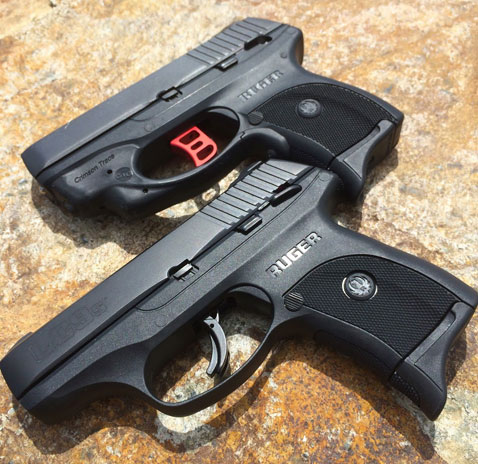
The LC9s trigger pull clocks in at 6 pounds as well, but because it is shorter than the Galloway LC9 it feels lighter. In fact — I said this after handling Marshall Halloway’s early LC9s — it may be the best striker-fired trigger I’ve ever felt. In fact, it’s approaching Apex Tactical territory, and that’s right out of the box. I started shooting it yesterday with a box of 9mm ARMSCOR ball, what I consider a break-in process before putting the gun into duty. I’ll get a hundred or so rounds of ball, mostly on steel plates, through it before I get to the dedicated carry ammo, Corbon DPX or, alternately, Hornady Critical Duty.
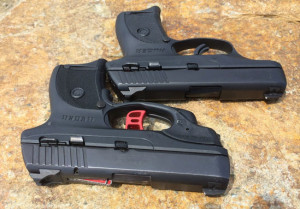
Interestingly enough, when firing the guns against each other, I’m more comfortable with the Galloway LC9, but I’m assuming that’s because I have a lot of rounds in the Galloway gun.
I think overall the mini-9mm market is absolutely fascinating. Most people date the current generation of mini-9s from the mid 2000s, when the Kel-Tec PF-9/P-11, the Walther PPS and a couple of years later, the Taurus Slim appeared on the market. Arguably one of the best single stack mini-9s ever made, the S&W Chief’s Special with its aluminum, rather than polymer, frame came out in the later 1990s. None of those guns made a particular dent in the market.
It took the .380 “explosion” as the flood of new shooters from the concealed carry movement entered the market, to change that dynamic. Quite literally, new concealed carry permit holders bought the little .380s by the hundreds of thousands, and within a couple of years a substantial portion of those shooters wanted a more powerful carry gun. The industry responded.
It’s be a while since I put a lot of rounds through the mini-9s…they really are little monsters to shoot!
The Kimber Solo is a sweet little gun, but it is hard to hold onto and VERY finicky about ammo choice…it’s full power or go home. It is easily the best finished of the little guns, and with the CT LaserGrips it is just about perfect. Be prepared to put a lot of work into it on the range, though!
Sorry I forgot the itty-bitty 9mm Springfield XD-S…nice little gun, although I’ve only shot one. SHOOTING GALLERY awarded Springfield top handgun of the year honors for their little single stack XDs.

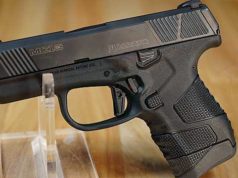
Agreed on the little 9’s being a handfull. I only owned the Kahr PM9 for a few weeks before I fell out of love with it. If you can’t shoot the gun well enough to get good hits at speed, that’s a clue. Either go to the bigger, more shootable gun, or go to the small gun with less recoil (I’m a fan of the LCP and Glock 42).
You don’t need to remove the mirrors from your home if you take either path.
Having cut my teeth on full house 357 and 44 Magnum revolvers, a 9mm anything is no big deal. True there are differences, but recoil impulse is recoil impulse and a good perspective is always a good thing.
If you’re having trouble dealing with the massive recoil of a mouse gun, find a friend with a .44 Magnum (.454 Casull is even better) and get a little helpful perspective.
After a few cylinders of heavy magnum loads go back to your mouse gun. Recoil will suddenly be like it should be … no big deal.